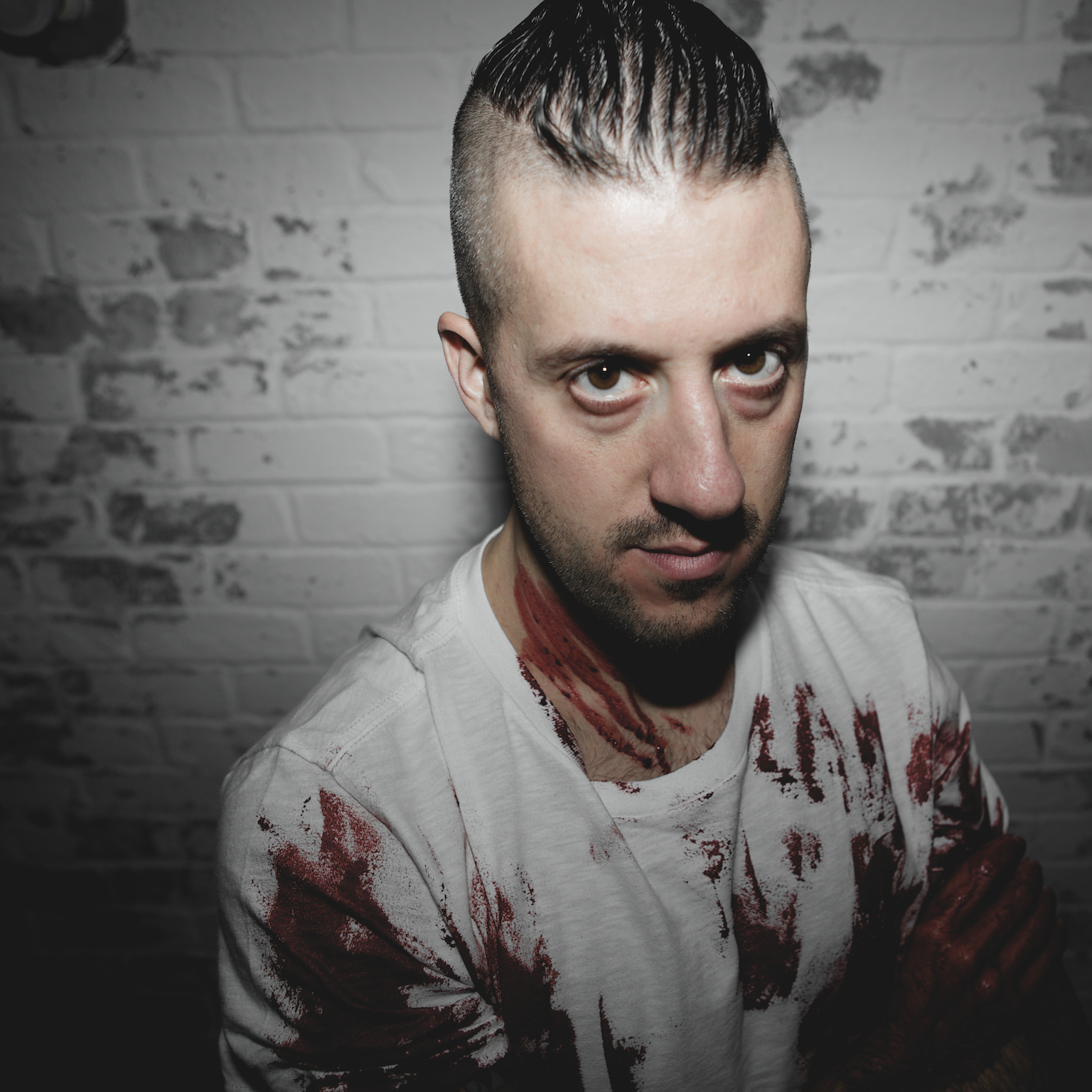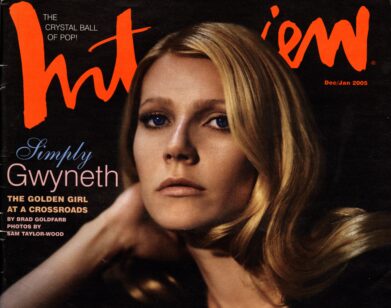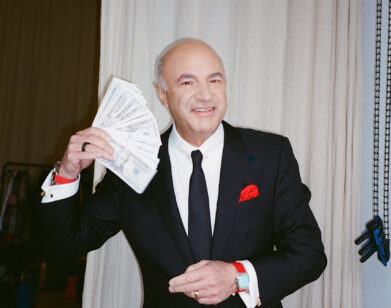Chef Jason Kallert, Center Stage

ABOVE: CHEF JASON KALLERT. PHOTO BY FRANK SUN
There’s been a lot of talk lately about performance in dining, and dining in performance. But an under-wraps show brewing at the Diamond Horseshoe, an abandoned nightclub beneath Times Square’s Paramount Hotel, might stun ravenous spectators into silence–mouths full, eyes open wide. Titled Queen of the Night and loosely based on Mozart’s The Magic Flute, the extravaganza mingles live actors and dancers with phantasmagorical displays of cuisine, devised by The Paramount Hotel’s executive chef Jason Kallert. Together they weave an interactive narrative that seduces every sense.
The space alone is beguiling. Opened in 1938 by theater-world eccentric Billy Rose, it housed a bawdy cabaret—”a wrong-side-of-the-tracks Follies,” as producer Jennie Willink describes. It has barely been used since its close in 1951: just once for an extravagant Condé Nast bash in 1988, and once for Andy Warhol’s wake in 1987. In the recesses beneath 46th Street, Diamond Horseshoe is sparkling again. The new design takes inspiration from Italian eccentric Marchesa Louisa Casati, whose maxim, “I want to be a living work of art,” nicely sums up her legacy (and the whole production’s attitude). Among the radiant details, one wall section swirls with butterfly wings, arranged concentrically. The iridescent, smooth beads spiraling out from the circles? Real beetles, thousands.
And Kallert is at the culinary center of it all. An alum of Le Cirque, where he worked for nine years through its heyday, he’s experienced the pinnacle of intense French kitchens, from screaming chefs to meticulous tasting menus. He’s not into that anymore though, he’ll tell you. He prefers “simple,” so long as it is memorable. Queen of the Night became the perfect challenge: serve over 200 people, all at once, and make a spectacle of it. The seasonal menu hinges on family-style dishes, which, to have ready all at once every evening, need to stay straightforward. Customized plating, like a stylized spit for roasted pigs, adds to the evening’s theatrics. The artist Jennifer Rubell, who often incorporates food into her work, collaborated with Kallert to involve food and drink as effectively part of the story.
This is, doubtlessly, the most elaborate project Kallert–or most chefs, for the matter–have been part of. Kallert started out as a dishwasher and busboy during high school in New Jersey, where he grew up. After graduating from the Culinary Institute of America, he worked at Tavern on the Green before Le Cirque. He consulted for a few restaurants and was hired by LDV Hospitality as the chef at No. 8 and Paramount Bar & Grill about a year ago. Until last April, when he got involved with Queen of the Night, he never thought much about theater.
We met with Kallert while the Diamond Horseshoe was still under construction. The pigs and other enormous meat hunks in his kitchen, connected to the theater, were already simmering in preparation for the night’s dress rehearsal. We started with a tour of the kitchen.
JASON KALLERT: We’re in the back of the house now. Back in January we were already talking about what was going to happen. That’s when the plans were done for the kitchen but we could still move things around and get different equipment. So, part of the show is serving whole pigs. [showing the rotisserie oven] This holds eight baby pigs. They have to be 15 pounds or less, or they don’t fit. I’m working with four small farms in Pennsylvania. We’re using 60 pigs a week, eight pigs every night. One farm could never do that. I’ll show you pigs later—they’re suckling pigs. They actually get cooked here. See the spits over there? The pigs get cooked on them, and the whole board gets carried out, and it sits on your table. All the food is large-format. One of the challenges was how to serve 200 people at the same time. If something can stay [in the oven] an hour more or an hour less, it can’t be screwed up.
RACHEL SMALL: You’re not making, say, 200 soufflés that need to be perfectly timed.
KALLERT: It’s not 200 soufflés. The eight pigs are in here, we can cook them, we can turn off the fire and leave them in, and then just turn it off ten minutes before they go out and they’re perfect, hot and crispy. I’ll show you in the fridge. [we look into the walk-in refrigerator, where the pigs are hanging] What we do is we hang them here for two days. You feel the fan? It dries out the skin and that’s how you get it crispy. If you took a fresh pig like these and put it on a rotisserie, it won’t be as good. These come out super crispy. Everything is very visceral. A whole pig, it’s normal all over the world. But it’s a little bit of a shock value.
SMALL: How did your past experience as a chef help you develop all this?
KALLERT: My food is all very clean. I worked at Le Cirque for nine years, and I prefer to have it a little more simple. A potato salad, in the high-class world, you peel the potatoes, you make it into a nice shape. This is more rustic. It’s still black truffles, so it has great flavor. Still good potatoes—these little potatoes are expensive. But the skin is on; it’s roasted in the oven. It’s a little bit more rustic, simple, clean.
SMALL: How does when it is served play into the performance?
KALLERT: The show was built, pretty much from the beginning, around the food. But it’s gone back and forth. Certain things are all built around the food and parts of the food are around the show. It’s very collaborative.
SMALL: Have you ever done anything like this before?
KALLERT: None of us have done anything like this. I worked a lot with Jennifer Rubell, so she’s the part on the show side that does the food. We’ve become really good friends and we work together. It’s been good. I’ve learned a lot. She’s learned a lot. And we’ve been lucky–she would have an idea about food, I would make something for her, and it would be completely perfect. She’s very much in the art world. She’s an artist and she uses food. So she’ll have an idea for an exhibit or something in a gallery and then utilize food.
SMALL: So, to get a little background, how did you start cooking?
KALLERT: I’ve been cooking since I was a kid. I cooked with my grandmother. I started at restaurants when I was 14. [After] I graduated [CIA], I went to Tavern on the Green [in September of 1997] and I was there for a year and a half. That was crazy. That was really high-volume. [In 1999], I worked at the Le Cirque in the Palace Hotel. In between that and the new Le Cirque, the current one, I worked on an Italian restaurant in Tribeca [Della Rovere]. Then I went back with Le Cirque. I knew I was going back to open the one that is there now [in Bloomberg Tower]. I was a chef de cuisine there. Me, as the chef, I did everything from A to Z.
SMALL: Obviously you’ve worked at some nice restaurants. How has it been coming on with LDV Hospitality, working for No. 8 and The Paramount Bar & Grill?
KALLERT: Once I came on with LDV, the idea was to start at The Paramount Hotel, to revamp the Paramount Bar & Grill. It was very much geared towards bar food. Only. We changed the whole concept. Complete, full menu. I brought in two people only and retrained the staff, showed them how to do everything. More than showing [the existing staff] how to cook, it’s showing them how to organize themselves. Then the cooking just comes easier. You change one little thing and all of sudden the machine works better. I went in there and changed a hundred of those little things, and now they all work better. At the same time, I was at Le Cirque for nine years, and I’ve worked with I don’t know how many French chefs now. It’s always goes to the yelling, and throwing shit, right?
SMALL: I was just going to ask about that.
KALLERT: I don’t bullshit, it’s better. Be nice, teach the guys and people to respect you for teaching them something a hundred times better. Why scare them into doing things right?
SMALL: How has it been collaborating with the cast and crew?
KALLERT: None of them have worked in the restaurant world, and I’ve never worked in the theater world. None of us know how each other’s world works. It’s very strange but it has gotten better, people understand better.
SMALL: I feel like there’s something in common with you managing a team of chefs and a director of a performance with a group of actors. There’s a similar element of coordinating a huge amount of people to do the right thing at the right time.
KALLERT: I do it the way I do it. They get that. “We want all of the food to come out within two minutes,” they said. You can’t serve food for 250 people in two minutes, it’s sheer amount of hands, the time it takes to walk. People can understand why. All of a sudden, a bunch of management, butlers and actors, who have never worked in a restaurant before, never even seen past the dining room, were like “Oh.” It’s an eye-opener.
SMALL: Now that you’ve had all of these rehearsals, what do you think the importance or the fun of dinner theater like this is?
KALLERT: Let’s start by saying that this is definitely not dinner theater. This is an interactive experience, theater, dancing, circus, food. Definitely not dinner theater. The actual food is part of the show. You’ll get it. It’s not abstract. You will get it.
SMALL: In a general sense, how do you think the food adds to the overall experience?
KALLERT: First of all in the theater world—because if you ever have gone to any kind of show, theater, whatever, even a strip club—who cares about the food? No one is eating the food or cares. They aren’t going there for that. This is definitely the first project I know about—even what I’m hearing from all the people in the theater world—it’s the first project where I guarantee people will come for the food. No doubt in my mind. I’ve eaten the whole pig at Il Buco, at The Breslin, at places you’ve never heard of up in the Bronx. I’m telling you these pigs, they’re milk-fed, small farms, there’s a lot of steps that are taken so that they come to the table super crispy. The rotisserie there is an expensive piece of machinery. When you see [the pig come out], it’s just gorgeous. People are going to eat the whole pig here and [realize] there probably isn’t another like that.
SMALL: What do you want people to take away from the show, as a chef?
KALLERT: I just want people to say that this is the best food that they’ve ever eaten. Four-star restaurants in New York are amazing, I love every one of them. Great presentation, the tasting menu thing, I did it so many years. I worked at Le Cirque when it was four stars and we did that, but when you actually put food in your mouth, you don’t see it. It’s gone from your eyes, right? Close your eyes, it tastes the same. I want people to put the beef in their mouth and [think] this is some of the best food, regardless of the presentation. On the other end of it, the presentation we are doing is on the other end of the spectrum of a tasting menu. It’s a large format and really visual. You get to share with people. Everyone has seen the small-portion tasting menu, no one has seen this. Not in the way we are doing.
SMALL: Definitely. I feel like for the few years there’s been more and more talk about dining as performance. Has that influenced you at all?
KALLERT: Nothing is influenced. When I open a new restaurant, when I do new food, I don’t have a recipe folder on my computer. I never do the same thing twice. Have you ever seen Ocean’s Eleven? The guy who does the bombing, Don Cheadle. When he says, my favorite line, “We don’t do the same gag, we do the next gag.” That’s me. If I have to do a tasting menu for some event, it’s always new. I apply myself on only technique and what tastes good together. As long as you are good with base cooking, you can do anything. You don’t need to go back to the same dish. None of this is influenced by any other restaurant. I have never done any of this food, in this context before. I want people to realize that this is not dinner theater, I want them to say “Holy shit! They are doing something amazing with the food that I’ve never seen or tasted.” I would love that. I would really love that.
QUEEN OF THE NIGHT OPENS ON NEW YEAR’S EVE AND RUNS FOR SIX WEEKS. FOR TICKETS AND MORE INFORMATION, VISIT THEIR WEBSITE.






